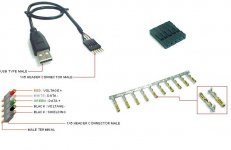hrobinson57
New Member
- Joined
- Jan 28, 2008
- Messages
- 9
I was lucky enough to get 2 Wyse mechanical keyboards from a friend who knows I go for that kind of thing. One just needed a good cleaning, and an adapter for the DIN5 connector plug to PS2. I use this on my bench, and really like the feel. The other is all cleaned up & ready to go, but it has an RJ11 connector (like for a phone). I have found a couple of RJ11 to USB adapters online, but I think they are for phone equipment. Will these work for a keyboard? The description doesn't really say much on this point. Has any one ever tried to convert one of these? Any help/advice would be appreciated.
Hal Robinson
Hal Robinson

